I would like to propose a project to KPC. For over a decade, Kuwait has been an importer of Natural Gas, however, I believe there is a chance for Kuwait to capitalise on the prospects of growth of Natural Gas demand internationally through the utilisation of Kuwait’s neighbours’ reserves, as well as its local Natural Gas reserves soon from the Durra Gas field.
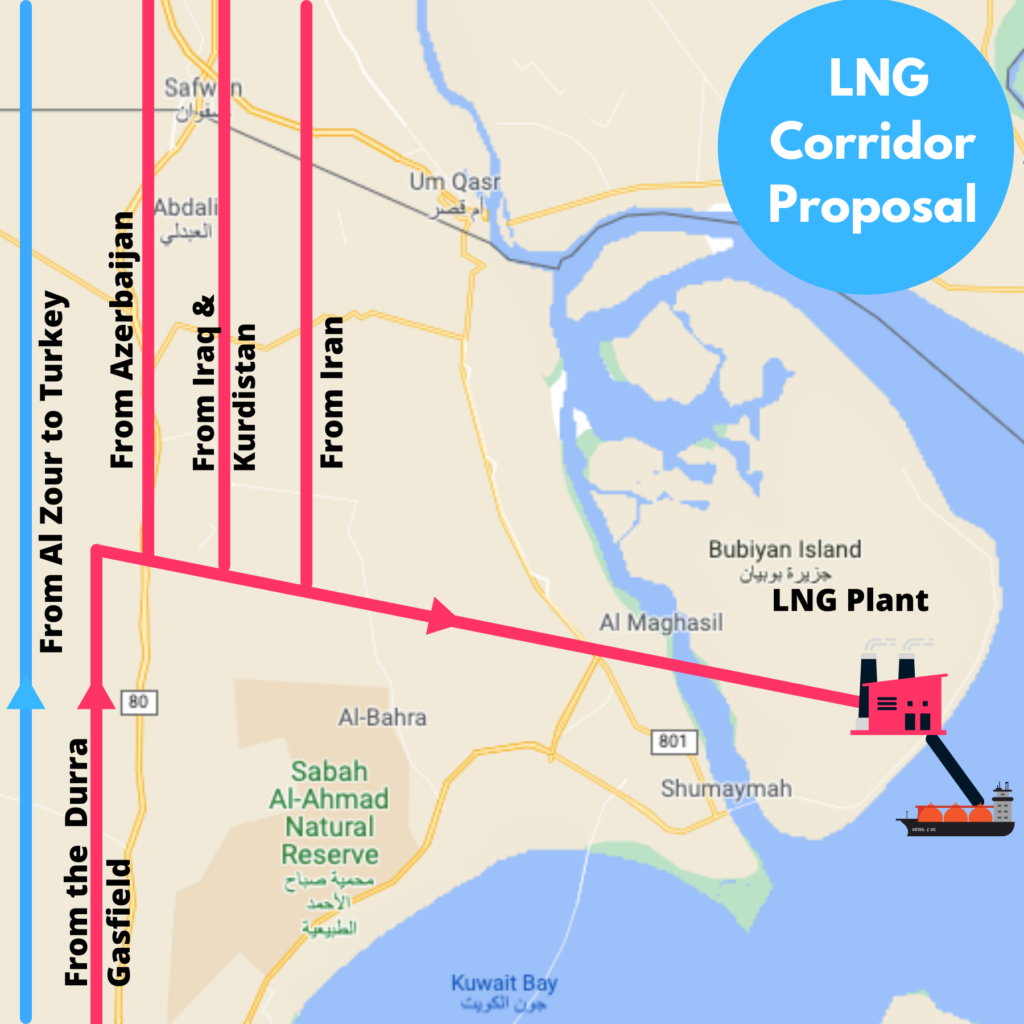
The proposed facility will start as an LNG port with a Gas liquefaction facility. The facility will be fed with Natural Gas through pipelines from Iraq and the Durra Gas field for starters, then with further expansion and diplomacy, more Natural Gas from Iraq’s Kurdistan and Azerbaijan should be liquefied and sold through the port.
How can this be Geopolitically achieved?
Iraq
Iraq has Natural Gas reserves of approximately 3 trillion cubic meters. Over the past, Iraq has been dependent on importing Natural Gas from Iran, and due to Iraq’s financial issues, they have not been able to pay for Iran’s – often overpriced – Gas. Therefore, Iraq is currently looking to use its resources to reduce its reliance on imports.
French energy company, Total, has recently struck a deal with the government of Iraq, part of the deal includes a US$ 2 billion Natural Gas processing plant with a projected production of 600 million cubic meters of Natural Gas per day.
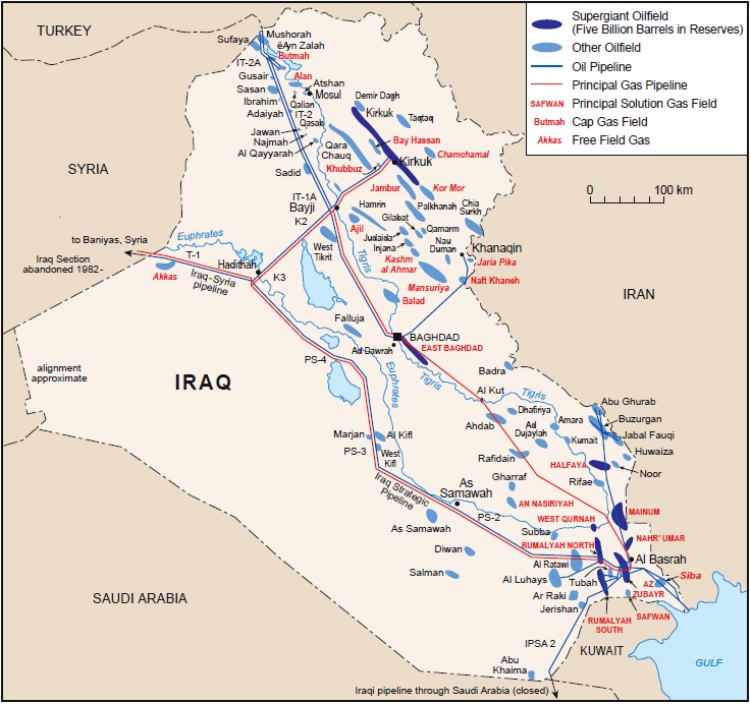
Iraq’s vast Natural Gas reserves are concentrated in Basra and by the troubled western borders with Syria. Therefore, over the next 3 to 4 years once Iraq has managed to secure the supply of its demand for Natural Gas from its field and the Kurdistan region it will feel the need to export any excess to increase its revenue.
Therefore, Kuwait will be in a strong position to export Iraq’s Natural Gas for a fair price, since otherwise, any investment in exporting Iraq’s Natural Gas on its land will be done through foreign investment vehicles that will aim to take a high percentage of the sales, thus shrinking Iraq’s margins further.
Kurdistan
At the same time, Kurdistan currently produces 5 billion cubic meters of Natural Gas/year to satisfy its local demand, with plans to expand production to 40 billion cubic meters/year by 2035. Kurdistan has been planning to sell 10 billion cubic meters of Natural Gas per year to Turkey once Turkey’s import contract with Iran expires in 2026. Turkey can offer Kurdistan the chance to sell its Natural Gas on the European markets via a route similar to the Trans-Adriatic pipeline (currently used by Azerbaijan).
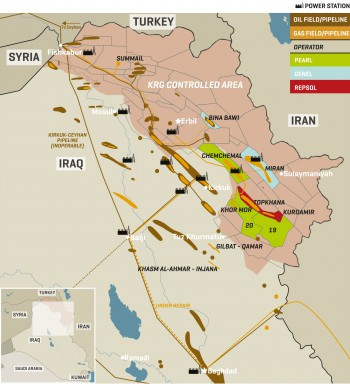
However, Turkey seemed recently to lean more towards reducing its Natural Gas pipelines purchases and increasing its LNG imports, which reduces Kurdistan’s Natural Gas clients list down to Iraq alone.
Kuwait stands in a much better position strategically, the European market is currently saturated with Natural Gas supplies from Russia, Qatar, North Africa, and the USA, but Kuwait can help ship the extra capacity left from Kurdistan’s Natural Gas sales to Iraq, to the hungry Asian markets (S. Korea, Japan, and China).
Dana Gas and Crescent Petroleum own 35% of each of the Khor Mor and Chemchemal Gas fields in Kurdistan and they also handle the commercialisation and sales of the Natural Gas to the local government. Both are Emirati companies and I believe that Kuwait will be able to persuade the companies to sell their Gas through Kuwait’s LNG port.
Azerbaijan
Azerbaijan has been trying to sell its fossil fuels through alternative routes from its original Russian pipeline route. After 10 years of development, Azerbaijan managed to export its Natural Gas to Europe through the Trans-Adriatic Pipeline (The European connection from the Trans-Anatolian Pipeline), however, Azeri gas still has no access to the Asian markets.
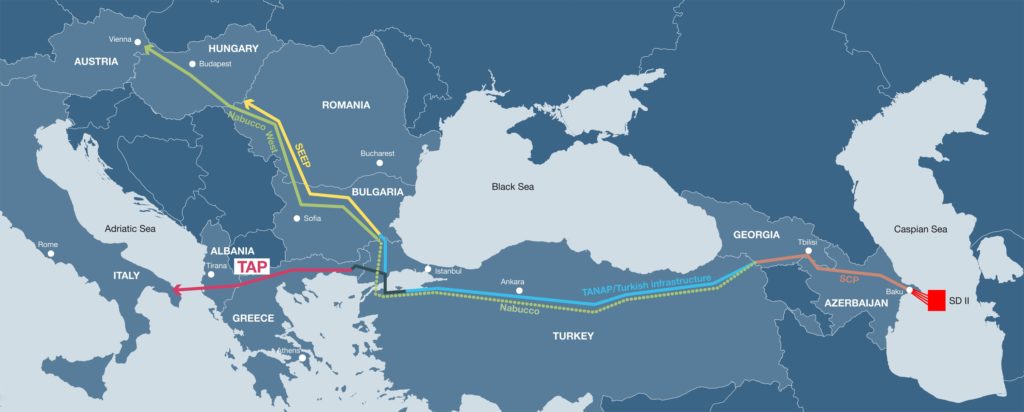
In the near future, Kuwait can negotiate and help finance an extension from the Trans-Anatolian pipeline (from the Erzerum station) to the pipelines that will deliver Kurdistan’s and Iraq’s Natural Gas to Kuwait’s port.
Iran
Since 2014, Iran and Oman have been in talks over a subsea Natural Gas pipeline that will allow Iran to send its gas to Oman for the latter to liquify it and ship it abroad. This shows that the Iranis are willing to cooperate with neighbouring countries on the liquefaction of their gas.
Furthermore, since 2015, Iran has been supplying the south of Iraq with 20 to 35 million cubic meters of Natural Gas per day. Recently, the supply has been decreasing due to Iraq’s liquidity problems, as mentioned earlier. After Total’s Gas projects and Kurdistan’s supply of Natural Gas or Electricity come online, Iran will have an extra capacity of Natural Gas, which Kuwait can use to liquefy in the proposed LNG port.
Iran has been at crossroads with Kuwait when it comes to the Durra Gas field for 20 years since Iran has been claiming that some parts of the gas field fall within its Exclusive Economic Zone with Kuwait and Saudi Arabia. Kuwait’s proposed LNG port could help reduce the tension in this issue.
What about the cost?
Each LNG plant consists of single or multiple trains. LNG trains come in different sizes, the capacity of Mid-scale trains is between 0.5 to 2 million tonnes per year, while large-scale trains have a capacity of more than 3 million tonnes per year. The large-scale trains offer economies of scale, however, they come with a higher price tag. Mid-scale trains allow for ease in expanding the capacity of the plant in the future, however, it affects the margins of the plant.
An example of the variations in project prices versus sizing:
- Cheniere Energy’s Corpus Christi plant has a capacity of 13.5 million tons per year (18.4 bcm/year) with 3 LNG trains, 3 storage tanks, 2 LNG carrier-docks, and 22 miles long pipelines. The total cost was 4 billion KDs.
- Nigeria’s train 7 (an expansion) has a capacity of 4.2 million tonnes per year (5.7 bcm/year) and a price tag of 3.3 billion KDs.
- Canada’s Woodfibre LNG project has a capacity of 2.1 million tons per year capacity (2.8 bcm/year), and it is estimated to cost 700 million KDs.
The capacity of Kuwait’s plant will depend on the trade-off between how much each participating region and country is willing to commit to export through Kuwait, and the amount of capital Kuwait is willing to raise and allocate for the project.
The graph below shows the projections of supply, liquefaction, and supply costs of each of the major LNG suppliers worldwide by 2025 (Source: Oxford Energy). It is to provide a reference for how Kuwait’s project could position itself in the future, in comparison to other producers.
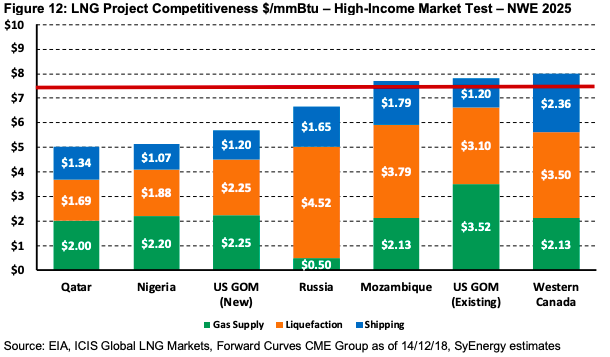
If the project is built in an area within the vicinity of the current Al-Zour LNG complex and the utilities and infrastructure can be shared with the new project then the capital that will be raised will be much less than if it was built in a new location (ex: Boubyan Island).
Additionally, the cost of the pipeline extensions from Iraq’s and Iran’s current gas pipelines will need to be financed as well. The cost of the pipelines can be split in a flexible manner between all the shareholders in the project and the interested parties. For example, the Arab Gas Pipeline had a total cost of 363 million KD with a length of 1,200 km. Each section of the pipeline had been built and, is currently managed, by a local consortium in each of the host countries.
If KPC decides to provide extra services to the gas providers, it can use any extra capacity from its 3 gas EPF (Early Processing Facilities) in the north of Kuwait. This, however, will require more financing.
How can we finance it?
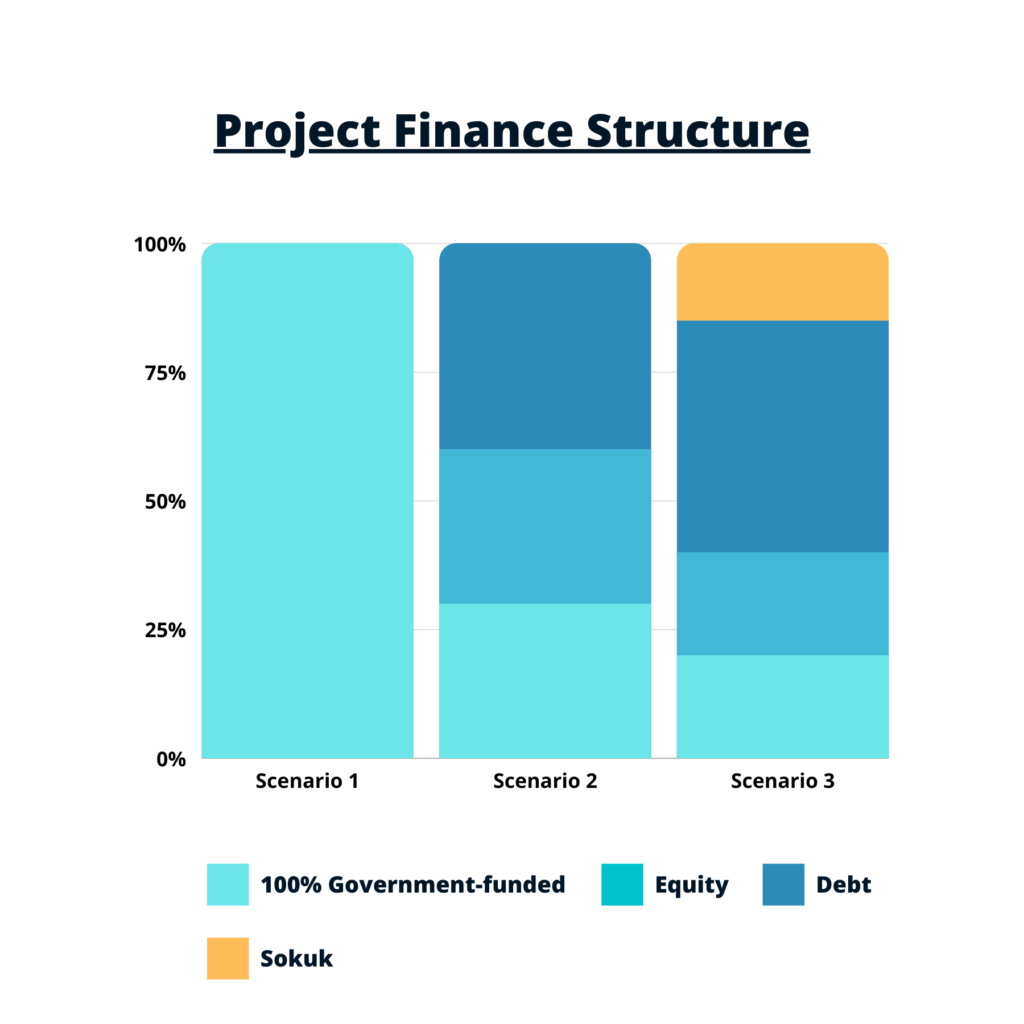
The graph above shows three different scenarios for how Kuwait can finance this project. To reduce risk, a portion of the project could be financed through government funding and equity, while the majority of the capital could be raised in the form of debt, through financing from international banks and by issuing sokuks.
Going back to our earlier examples:
- 27% of the cost of Cheniere’s Corpus Christi has been financed through equity and the remaining 73% was through debt.
- 30% of the cost of Nigeria’s Train 7 project has been financed through corporate loans, while 70% has been financed through the company’s internal cashflows.
Inviting international financiers and international oil companies, in addition to stakeholders, to finance this project will be the best approach, due to the current liquidity problem in Kuwait, and it allows Kuwait to attract foreign investment into the country, which is one of the main points behind this project.
An example of equity sales, Saudi Aramco, Kuwait’s Investment Authority, and Emirate’s Mubadala each own 15% of Egypt’s SUMID pipeline, which connects between the Red Sea and the Meditteranean.
The Future
Kuwait could use the development of this LNG port to position itself as a regional LNG hub, while also capitalising on its newly minted Natural Gas storage capacity, by investing in pipelines reaching back to Turkey’s Trans-Adriatic pipeline and serving as a transit zone for the Qatari, Asian, and Australian Natural Gas on its way to the European Market.
Furthermore, the new port and the infrastructure could be further utilised in a way that will help Kuwait be part of the world’s upcoming sources of Energy. More to this in my next article.